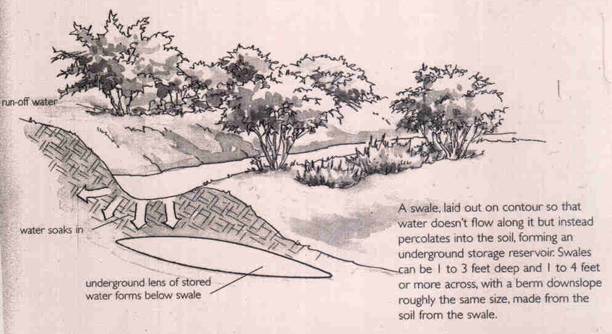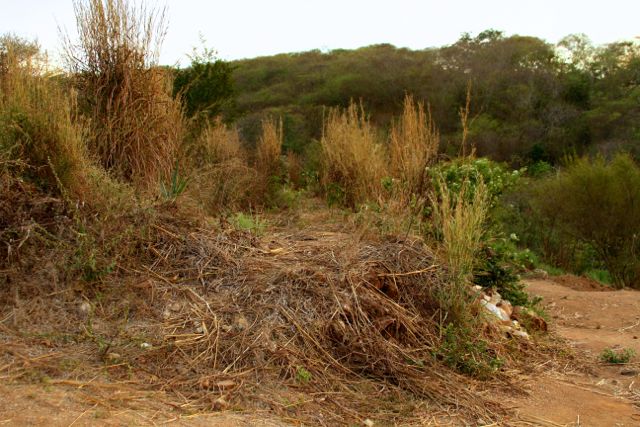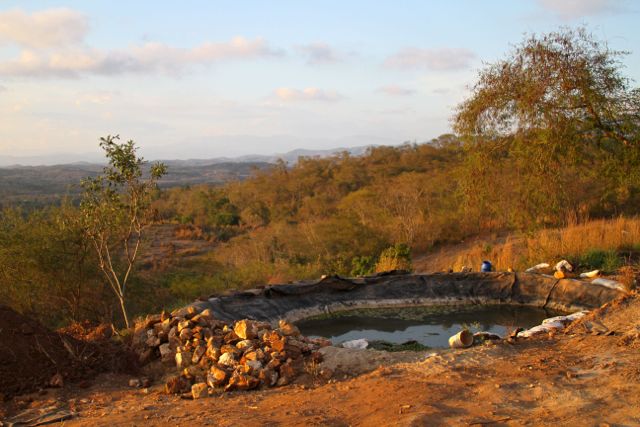A Food Forest Grows In Colotepec
A few years ago a New Zealander called Eli came to town. He’s a tall guy with long blond hair who always says hello in the street. Like a lot of people, he came here to surf, but then he discovered Puerto offers a lot more than waves.
Eli Mateja grew up with parents who love gardening. As a child he went to a Waldorf school where he was taught about nature and horticulture. He decided to stay in Puerto and grow food.
Eli bought a piece of land on a hillside overlooking the Colotepec river. Then he discovered some DVD’s about permaculture by the Australian, Geoff Lawton. These documentaries showed him how to create a food forest through careful observation of the land, good planning and a lot of work. Inspired by Lawton’s example, Eli learned about native plants from local gardeners and farmers, and he and his wife, Sandra, with some help, began a food forest that will ultimately provide fruit, vegetables and herbs for their family. (They have two young children.)
A permaculture food forest is a self-sustainable, abundant supply of food that can last millenia. In one of his videos, Geoff Lawton visits a 2,000-year-old food forest in Morocco. By creating a forest of organic plants and trees that grow in harmony and feed each other, Eli is helping nature. Growing a forest improves soil, water and air. In return nature gives food, medicinal plants, construction materials, fuel for cooking and years of joy.
Most plants need good soil and water. Some of the first trees Eli planted were native huaje legumes. Legume trees fix nitrogen into the soil, thus enriching it. After a few months some of the trees are chopped and dropped onto the forest floor to copy nature’s method of covering ground with natural mulch. A mulch of leaves and branches protects the soil from the tropical sun by keeping it humid. The mulch also suppresses weed growth and creates a habitat for beneficial microorganisms and earth worms, which busily make excellent soil. After a few months the older mulch decomposes and feeds the soil with nutrients, boosting plant growth.
To save rainwater Eli and his friends built numerous swales. The swales are large, long mounds of earth running along level lines across the hill. Behind the swales are trenches one to two meters deep. The total length of the swales is about 400 meters. When it rains heavily the swales collect at least 1,000 liters of water per meter in the trenches. That’s about 400,000 liters of water every time it rains hard.
Beneath the soil is a layer of bedrock that traps the water in the soil. The water soaks into the land and slowly filters down the hill, giving water to all the plants. This process can take months. So effective are the swales that the stream at the bottom of Eli’s land has running water in January. It hadn’t had water this late in the dry season for many years. The well by the stream used to take a week to fill in the dry season; now it takes two days, and new springs are popping up.
Eli has also started an aquaculture project by building ponds to grow edible water plants, algae and mojarra fish. Eli plans to feed the fish with, among other things, leaves from the highly nutritious moringa trees and to fertilize the plants with the manure of his chickens. The permaculture videos show how aquaculture can be thirty times more productive in proteins than land based protein production. The freshwater algae spirulina is incredibly rich in protein, vitamins, minerals and antioxidants.
There is still a lot of work to be done, but Eli’s aim is to create his own supermarket of healthy organic fruit, vegetables, chicken, fish, medicines and wood. A well-designed food forest will eventually need minimum input and physical labor because everything in it will work together for the benefit of the whole forest. By helping nature now, nature will provide for Eli’s family for a long time.















